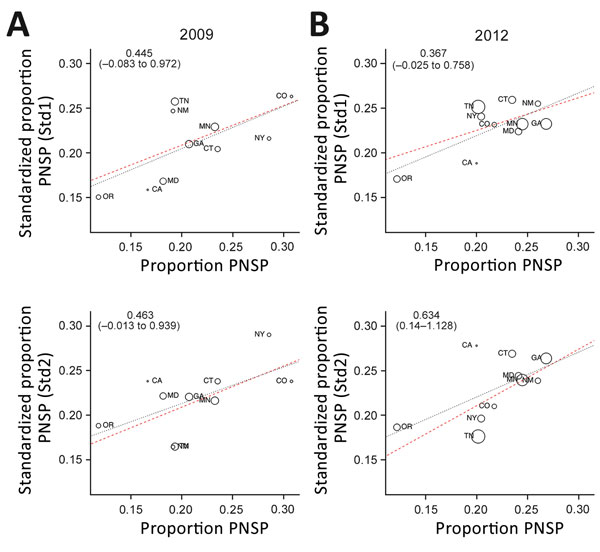Volume 23, Number 6—June 2017
Dispatch
Penicillin Resistance of Nonvaccine Type Pneumococcus before and after PCV13 Introduction, United States
Figure 2

Figure 2. Crude versus standardized proportions of nonvaccine type serotypes with penicillin nonsusceptibility, by state, United States, 2009 and 2012, based on Active Bacterial Core surveillance system data from 10 US states. Std1 denotes standardization for geographic heterogeneity in serotype distribution. Std2 denotes standardization for serotype-specific differences in resistance. Regression slopes with 95% CIs are indicated in the upper left corner of each panel. Larger circles represent states with a greater number of penicillin-resistant samples. Dashed lines represent the inverse-variance weighted (red) and unweighted (gray) regression slopes. PNSP, penicillin-nonsusceptible pneumococcus.
1These first authors contributed equally to this article.